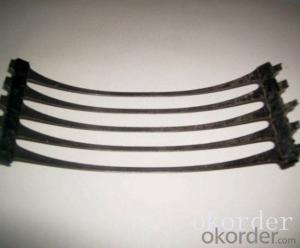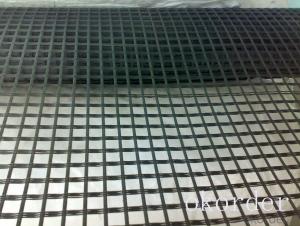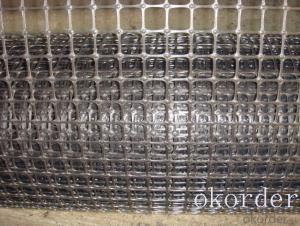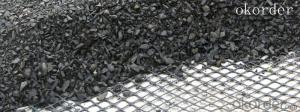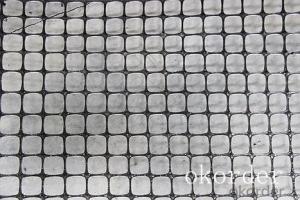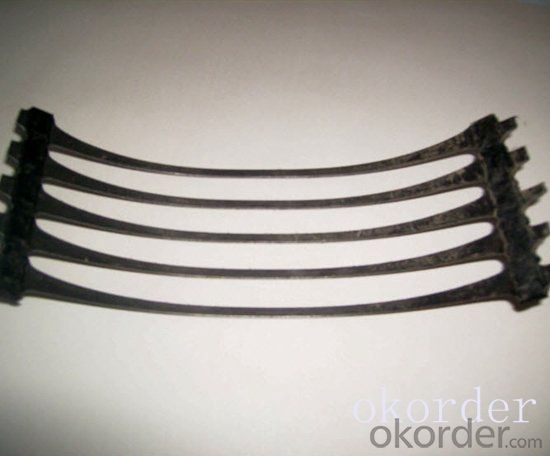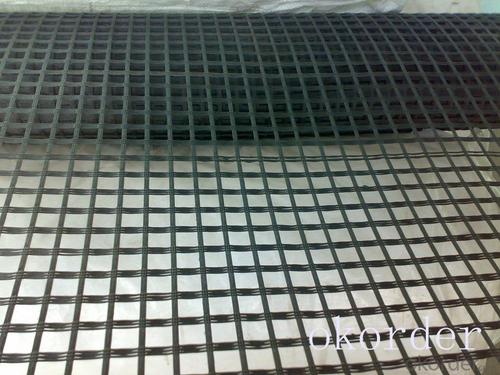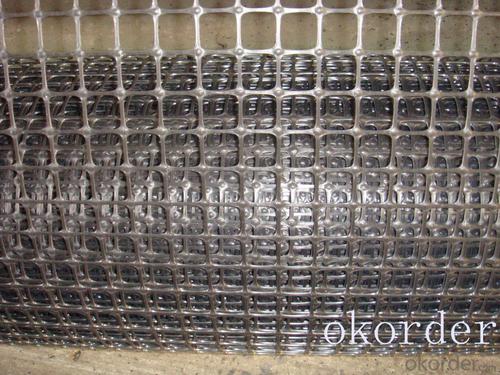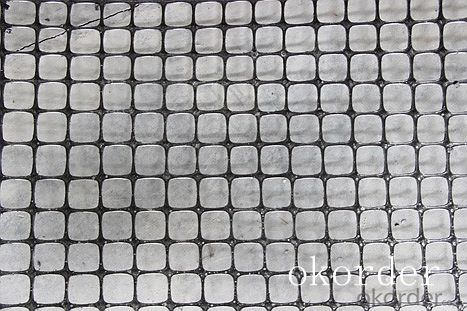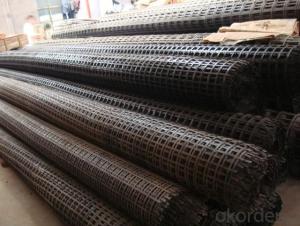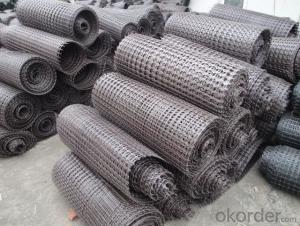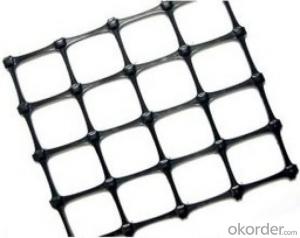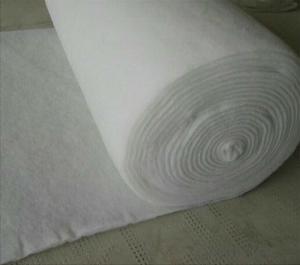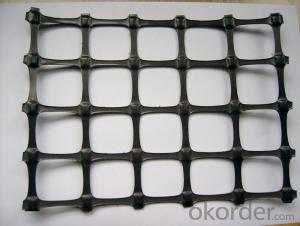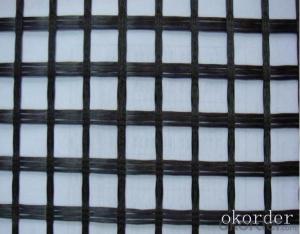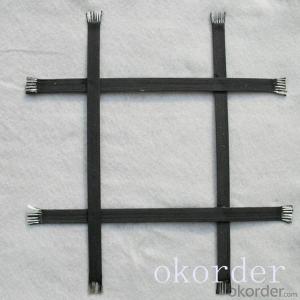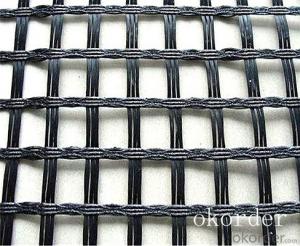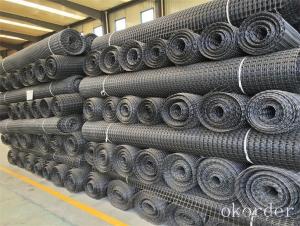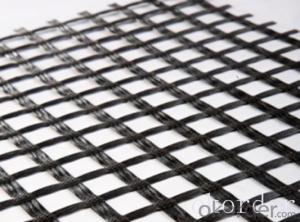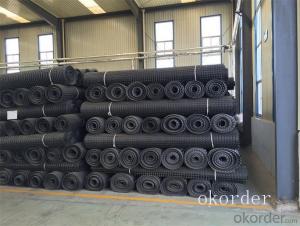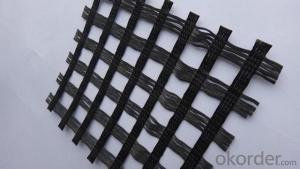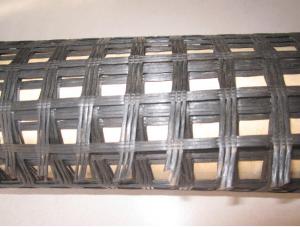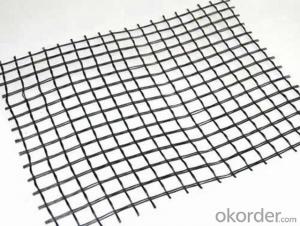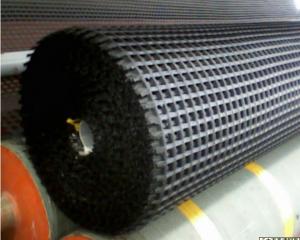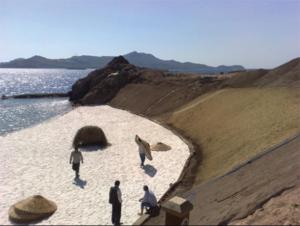High Modulus Geogrids with Highest Quality Made in China - Geogrids Australia
- Loading Port:
- China main port
- Payment Terms:
- TT OR LC
- Min Order Qty:
- 1000 m²
- Supply Capability:
- 10000000 m²/month
OKorder Service Pledge
OKorder Financial Service
You Might Also Like
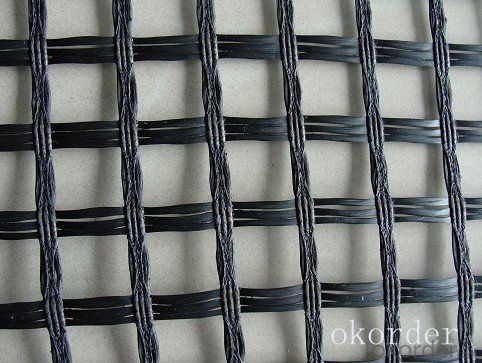
Product Introduction
Biaxial
In case of water streams construction, geogrid application allows planting trees and shrubs along the banks protecting them from ablation. Geogrids are an economical solution for filling water stream base and creates almost an ideal surface for laying down a water resistant layer.
Type:
Geogrids
Place of Origin:
Shandong, China (Mainland)
Brand Name:
CMAX
Model Number:
20KN/M--50KN/M
Material:
Plastic
width:
1-6m
Certificate:
CE,ISO
Production function
1:Tensile strength, high creep degeneration small, it has good flexibility, low elongation at break, and effectively solved the engineering distortion and quite a shift, adapt to the environment soil, and can meet the retaining wall of high grade highway tall role.
2:Effectively improve the bearing the reinforcement embedded locks, bite role, great enhancement the bearing capacity of the foundation, effective constraint of soil lateral displacement, enhance the foundation stable performance.
3: Compared with the traditional grille has more strength, high bearing capacity is strong, prevent ageing, friction coefficient.
4: Effectively avoid in construction process by a few words of rolling, damage caused by the construction damage.
5: Widely used in railway, highway, the dam. The bank of the river, slope protection, enhance bridge road surface treatment etc.
Our Service
Quality assurance
1.On a regular basis or as per your request,we entrust national testing agencies to conduct quality inspections
2. Strictly in accordance with the ISO9001-2008 international quality system standard,we monitor and manage the whole process throughout production,quality testing,and measurement to ensure product quality
3. For quality-related construction delay or substandard construction(except for damage or losses due to customer’s responsibility or irresistible natural disasters),we have refunding,replacement,and repair services.We will respond to customers’ feedbacks on quality issues within 24 hours.
Packaging & Shipping
Packing: PLASTIC FILM INSIDE, AND WOVEN BAG OUTSIDE
Shipping: About 15 days after receipt the deposit
FAQ:
Q: What kind of payments does jenor support?
A: T/T, L/C, Cash are accepted.
Q: Do you charge for the samples?
A: Accordeing to our company policy, the samples are free, we only charge the freight fee. And we will return the freight fee during the next order.
Q: Can you produce according to customers' design?
A: Sure, we are professional manufacturer, OEM and ODM are both welcome.
Q: Do you have other products?
A: Yes, please check the pictures:
- Q: What are the factors that affect the installation cost of geogrids?
- There are several factors that can affect the installation cost of geogrids. These include the size and scope of the project, the type and quality of the geogrid material, the condition and stability of the soil, the accessibility of the site, the labor and equipment needed for installation, and any additional site-specific requirements or challenges.
- Q: Production of geotextile manufacturers which good
- Needled nonwoven geotextile:The specification of 100g/m2-600g/m2 between any choice, the main raw materials is the use of polyester staple fiber or polypropylene staple fiber, made by acupuncture method, the main purpose is to: slopeprotection River, sea, Lake embankment, land reclamation, flood control engineering, dock lock, is an effective way to maintain and prevent piping through the return to the soil and water filter.
- Q: How do geogrids improve the performance of geotextile sediment control tubes?
- Geogrids improve the performance of geotextile sediment control tubes by providing additional strength and stability to the structure. They enhance the overall integrity of the tube, preventing deformation or collapse due to external forces such as water pressure or soil movement. Geogrids also help distribute the load evenly, reducing the risk of localized failures. Overall, the inclusion of geogrids significantly enhances the effectiveness and longevity of geotextile sediment control tubes in controlling sediment and erosion.
- Q: How do geogrids improve the bearing capacity of foundations?
- Geogrids improve the bearing capacity of foundations by providing reinforcement and stability to the soil. They act as a strong tensile element, distributing the load more evenly and reducing settlement. This helps to prevent soil movement and failure, ultimately increasing the overall strength and stability of the foundation.
- Q: What is the recommended geogrid roll width for specific applications?
- The recommended geogrid roll width for specific applications can vary depending on factors such as soil conditions, load requirements, and project specifications. It is best to consult with a geotechnical engineer or geosynthetics expert to determine the appropriate geogrid roll width for your specific application.
- Q: Can geogrids be used in underground tunnels?
- Yes, geogrids can be used in underground tunnels. Geogrids are commonly used in tunnel construction to reinforce the surrounding soil or rock, providing additional stability and reducing the risk of ground movement. They help distribute the loads and prevent soil or rock collapse, ensuring the safety and longevity of the tunnel structure.
- Q: What are the typical applications of geogrids?
- Geogrids are commonly used in civil engineering and construction projects for various applications such as soil stabilization, reinforcement of retaining walls, slope stabilization, pavement reinforcement, and erosion control. These grids provide strength and stability to soils, reducing the chances of soil movement and improving the overall stability and longevity of the structure.
- Q: Do geogrids enhance the stability of mechanically stabilized earth walls?
- Yes, geogrids do enhance the stability of mechanically stabilized earth walls. Geogrids are commonly used in the construction of these walls to improve their structural integrity and prevent potential failure. They provide reinforcement by acting as tensile elements, distributing external forces, and increasing the overall strength of the wall system. Geogrids effectively resist lateral earth pressures, reduce wall deformations, and enhance the overall stability and longevity of mechanically stabilized earth walls.
- Q: Are geogrids resistant to fire?
- No, geogrids are not typically resistant to fire. They are primarily used for soil stabilization and reinforcement purposes and do not possess inherent fire-resistant properties.
- Q: Can geogrids be used in mechanically stabilized earth walls?
- Yes, geogrids can be used in mechanically stabilized earth walls. Geogrids are commonly used as reinforcements in mechanically stabilized earth walls to improve their stability and strength. They effectively distribute the forces within the soil and reduce potential wall failure.
Send your message to us
High Modulus Geogrids with Highest Quality Made in China - Geogrids Australia
- Loading Port:
- China main port
- Payment Terms:
- TT OR LC
- Min Order Qty:
- 1000 m²
- Supply Capability:
- 10000000 m²/month
OKorder Service Pledge
OKorder Financial Service
Similar products
Hot products
Hot Searches
Related keywords
